Cooking History
Cooking technology evolved from simple open-fire roasting to advanced methods like microwaves and induction cookers, which use radio waves and electromagnetism for efficient, energy-saving cooking.
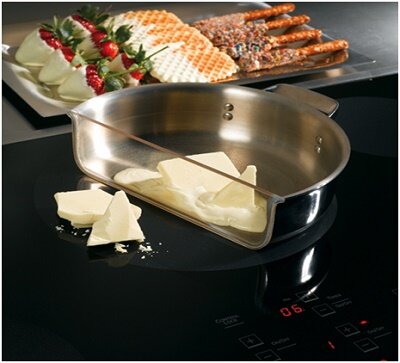
Figure 1 - Induction cooker
Electro-magneto-thermal coupling in EMS
Induction heating intricately combines electromagnetic and thermal phenomena, where an alternating electric current creates an electromagnetic field that induces eddy currents in a workpiece. These eddy currents generate heat, evenly warming the workpiece. Addressing this multifaceted challenge, EMS offers solutions by enabling the coupling of these phenomena. Through an AC magnetic study linked to thermal analysis, EMS provides crucial data such as magnetic flux density, current densities (applied and eddy), inductance values critical for power electronics, and detailed thermal information like temperature and heat flux. The accompanying illustration showcases a CAD model of a commercially available induction table, designed using CAD software.
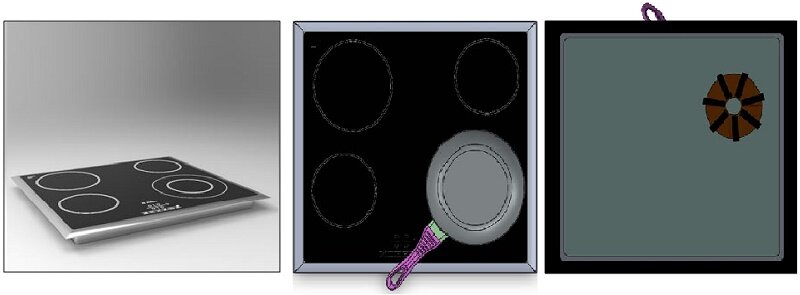
Figure 2 - The work coil situated at the bottom of the table
Figure 3 illustrates the magnetic flux within the induction cookware, highlighting its concentration around the iron cores. Meanwhile, Figure 4 depicts the eddy currents generated at the bottom of the pan.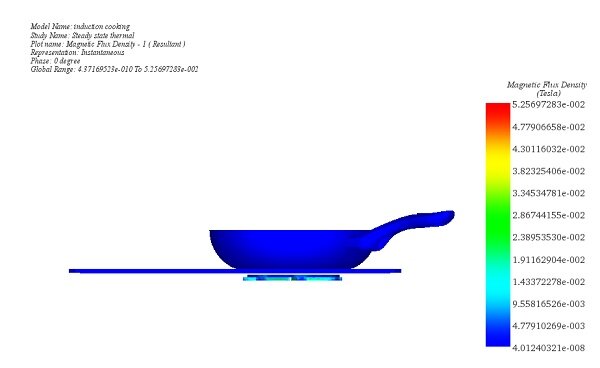
Figure 3 - Magnetic flux density around the cooktop
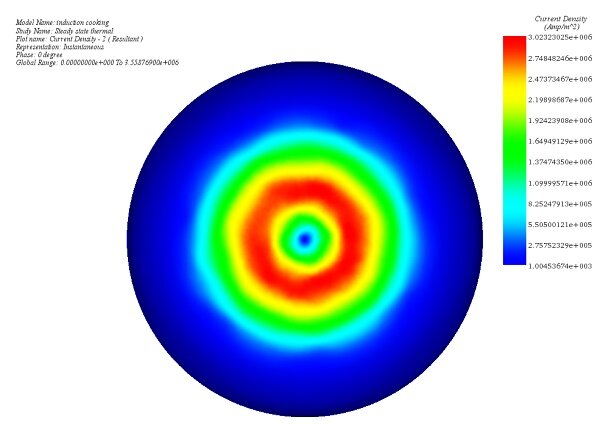
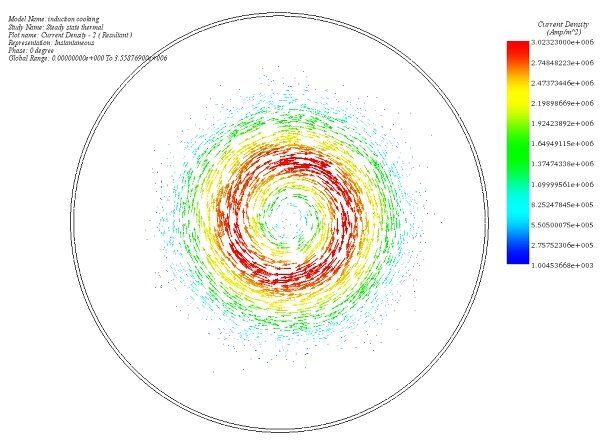
Figure 4 - Eddy current density generated in the pan, fringe, and vector plot
Figures 5a and 5b showcase the temperature distribution throughout the induction table and specifically in the pan, respectively.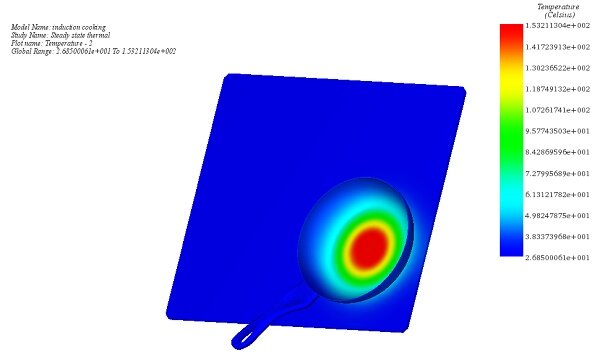
a)
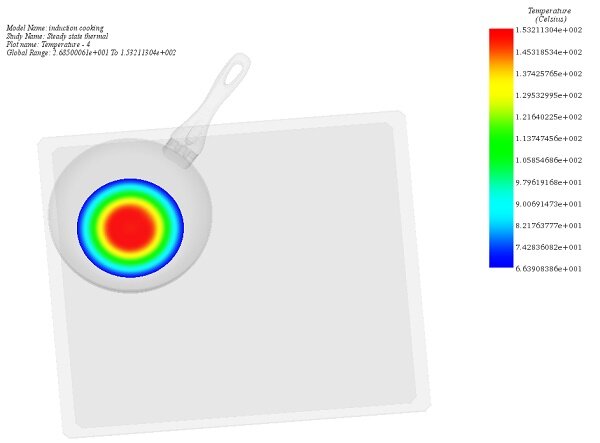
b)
Figure 5 - Temperature distribution, a) in the whole model b) in the surface of pan
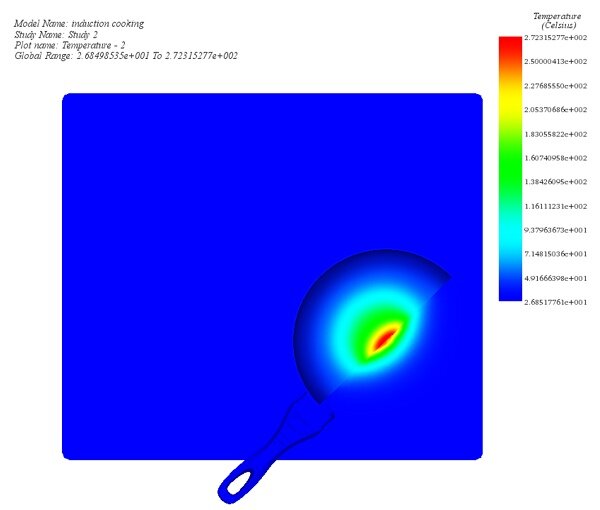
Figure 6 - Temperature in half a pan (it shows that the heat is located on the pan)
The figure illustrates the time variation of temperature at a specific point located at the bottom of the pan.
Figure 7 - Temperature variation in the bottom of the pan
What is the Induction cooking risk?

Each type of cooktop has inherent dangers, from the risk of burns and fire with electric stoves to the potential for leaks and explosions with gas. Induction cooktops, while avoiding direct heat and thus reducing burn risks, introduce concerns about the effects of electromagnetic fields on health. The Federal Office of Public Health of Switzerland suggests that risks can be mitigated by using proper cookware and maintaining distance from the cooktop. Special caution is advised for individuals with pacemakers or defibrillators. Technologies like EMS can limit electromagnetic field exposure, making induction cooking safer. European regulations define exposure limits to protect against the potential stimulation of nerves and muscles by electromagnetic fields, with specific current density limits set for low and medium-frequency fields to ensure safety. These measures aim to minimize health risks while allowing the benefits of induction cooking to be safely enjoyed.

Figure 8 - Variation of magnetic flux density in circle of 30 cm radius